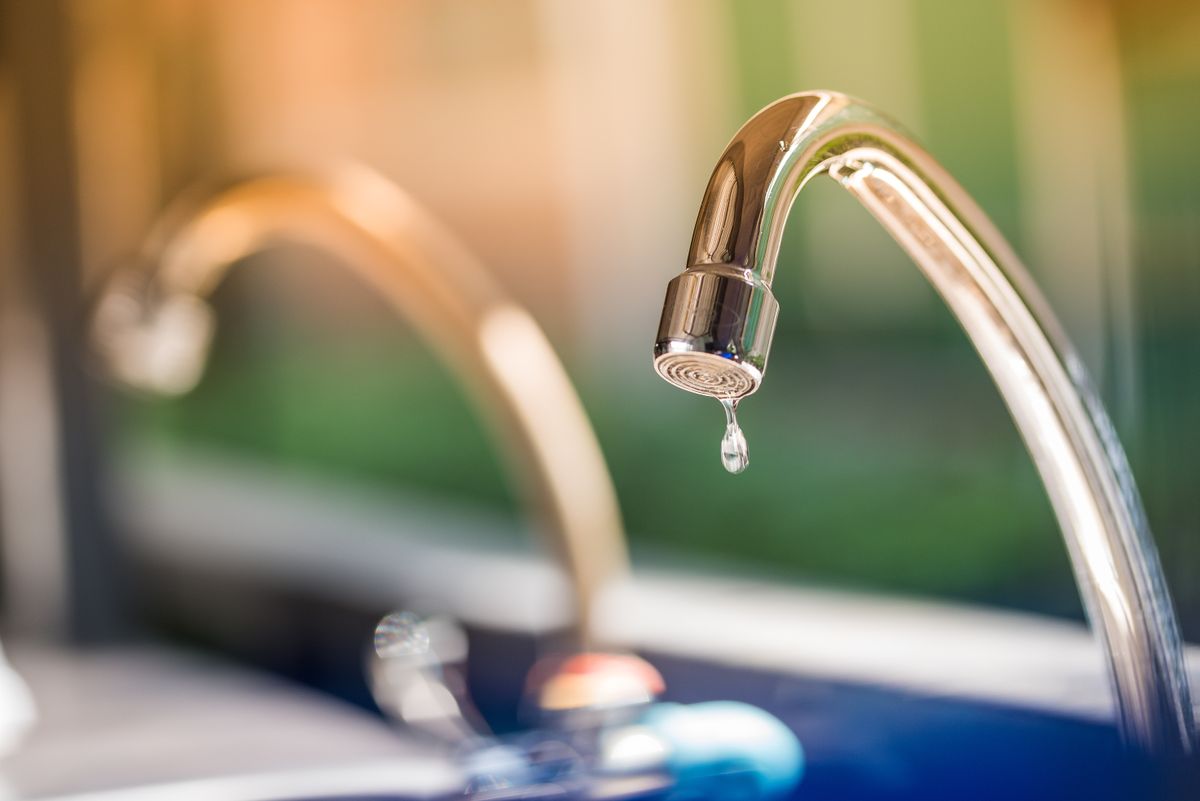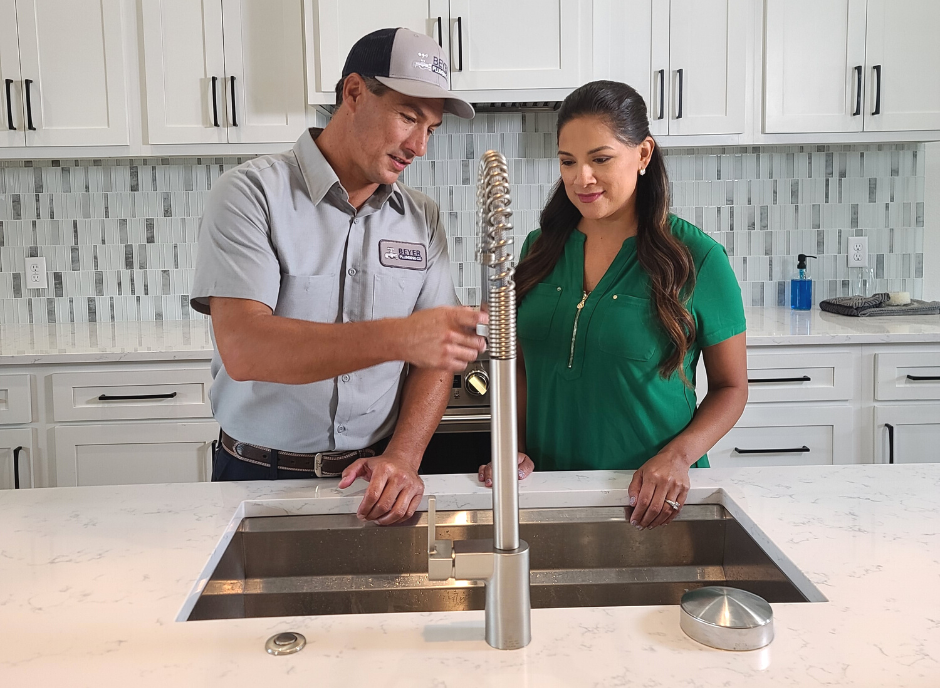What It's Critical to Rectify a Faulty Faucet
What It's Critical to Rectify a Faulty Faucet
Blog Article
We have discovered this article pertaining to Why Are My Faucets Dripping (And Can I Fix It Myself)? listed below on the net and accepted it made good sense to talk about it with you in this article.

Dripping taps might look like a small inconvenience, however their influence goes beyond simply the inconvenience of the noise. From drainage to incurring unnecessary monetary expenses and wellness dangers, overlooking a dripping faucet can result in different repercussions. In this post, we'll look into why it's crucial to address this common household issue promptly and effectively.
Wastage of Water
Environmental Impact
Dripping taps add dramatically to water wastefulness. According to the Epa (EPA), a single faucet trickling at one drip per secondly can squander more than 3,000 gallons of water each year. This not just strains water sources but additionally impacts environments and wildlife depending on them.
Financial Expenses
Increased Water Expenses
Beyond the ecological impact, trickling faucets can blow up water costs significantly. The accumulated waste over time equates right into higher energy expenditures, which could have been stayed clear of with timely repair services.
Possible Residential Property Damages
In addition, prolonged leaking can bring about harm to fixtures and surfaces surrounding the tap. Water buildup can create staining, corrosion, and even structural problems if left ignored, resulting in extra repair service prices.
Wellness Problems
Mold And Mildew and Mold Development
The consistent visibility of wetness from a leaking faucet produces an optimal atmosphere for mold and mold growth. These fungi not only jeopardize indoor air high quality however additionally present wellness risks, especially for people with breathing problems or allergic reactions.
Waterborne Illness
Stagnant water in leaking taps can become a breeding place for microorganisms and other pathogens, enhancing the risk of waterborne conditions. Contaminants such as Legionella bacteria flourish in stagnant water, possibly bring about serious illnesses when ingested or inhaled.
Do it yourself vs. Specialist Repair
Advantages and disadvantages of Do It Yourself Repair
While some may attempt to deal with a leaking faucet themselves, do it yourself fixings come with their own collection of obstacles. Without appropriate understanding and devices, do it yourself attempts can intensify the problem or cause insufficient fixings, lengthening the trouble.
Advantages of Working With a Professional Plumber
Hiring a professional plumber makes certain that the underlying cause of the trickling tap is resolved properly. Plumbers have the expertise and tools to detect and repair faucet concerns effectively, saving time and minimizing the threat of additional damage.
Step-by-Step Overview to Repairing a Dripping Faucet
Devices Required
Prior to trying to take care of a dripping tap, collect the necessary devices, including an adjustable wrench, screwdrivers, replacement parts (such as washers or cartridges), and plumber's tape.
Typical Faucet Issues and Their Solutions
Determine the type of faucet and the details concern creating the drip. Typical problems include damaged washing machines, corroded valve seats, or faulty O-rings. Describe maker instructions or on-line tutorials for detailed guidance on repairs.
Safety nets
Regular Upkeep Tips
To prevent leaking taps, carry out regular maintenance such as cleansing aerators, examining for leakages, and replacing damaged components quickly. In addition, consider setting up water-saving tools or updating to more effective components.
Relevance of Prompt Repair Works
Attending to trickling taps as soon as they're discovered stops more water wastefulness and possible damages, eventually conserving both water and cash in the future.
Influence On Residential Or Commercial Property Value
Understanding of Well-Maintained Home
Preserving a building in good condition, consisting of dealing with maintenance issues like leaking faucets, boosts its viewed value and desirability amongst prospective buyers or lessees.
Impact on Resale Value
Properties with properly maintained plumbing fixtures, consisting of faucets, command higher resale worths in the realty market. Addressing leaking faucets can contribute to a favorable perception throughout home examinations and settlements.
Environmental Duty
Individual Payment to Conservation
Taking responsibility for dealing with trickling faucets lines up with wider initiatives toward water preservation and ecological sustainability. Every individual's actions collectively make a substantial influence on preserving precious resources.
Sustainable Living Practices
By focusing on punctual fixings and taking on water-saving behaviors, people add to lasting living methods that benefit both present and future generations.
Conclusion
Dealing with a dripping tap surpasses simple convenience; it's a vital step towards saving water, decreasing financial prices, and securing health and residential or commercial property. Whether through do it yourself repair work or specialist support, doing something about it to fix leaking faucets is a little yet impactful way to promote liable stewardship of resources and add to a much healthier, much more lasting future.
How to Fix a Dripping or Leaky Faucet
A leaking faucet is one of the most common problems that homeowners encounter, but it being commonplace doesn’t make it any less annoying. The constant drip drip drip of a leaking bathtub faucet, showerhead, or sink tap can disturb your home’s serenity. Left neglected, a dripping faucet can also result in higher water bills and discoloration or mold growth in your sink or plumbing fixtures.
Fortunately, you don’t have to be a trained plumber to know how to stop a dripping faucet. With some basic tools, replacement parts, and a little patience, leaky faucet repair is a breeze. In this article, we’ll explain what causes dripping faucets and how you can fix them.
What Causes a Leaking Faucet?
Kitchen and bathroom faucets come in all manner of designs, but most involve some combination of valves, O-rings, seals, and washers. The O-ring is usually the weakest link, but any one of these pieces can wear down over time. Heat, moisture, temperature fluctuations, minerals, mold, and movement can contribute to warping and corrosion, breaking the watertight seal. This just comes with the territory of being a homeowner. Everything is always subject to wear and tear, and some component parts of your appliances and fixtures need to be replaced on occasion. At least replacement O-rings are cheap!
More rarely, dripping faucets can be a symptom of excessively high water pressure. Were this the case in your home, you would probably notice that the leak is not isolated to one faucet. Water pressure issues are harder to resolve on your own. We recommend contacting a professional plumber if you suspect your water pressure is too high.
How to Fix a Dripping Faucet
Pipe wrench or monkey wrench Allen wrench set Screwdrivers Old towel or rag Shut off the water.
Before you do anything, you need to turn off the water to keep from drenching your kitchen or bathroom. You should find a valve under the sink and against the wall. Once you’ve turned this valve, try turning the faucet on to confirm that the water source has been cut off.
If you can’t locate your local valve for the faucet you’re working on, you can always shut off the water to the house at the main valve. Of course, this will prohibit anyone from using the sinks, showers, or toilets while you’re working on the faucet that’s giving you trouble.
Plug or block the drain.
You’ll be disassembling the faucet and removing some small bits of hardware. Plug the drain with a stopper or rag to avoid the possibility of a small screw falling into your P-trap.
Take apart the faucet assembly.
There are several varieties of kitchen and bathroom faucets, each with its own manner of assembly. For detailed instructions on how to disassemble your faucet, you can refer to the fixture’s manual or contact the manufacturer. If you know whether you have a ball, disc, cartridge, or compression faucet, you can find detailed schematics online.
In general, you need to begin by removing the faucet handles. You might notice a small screw that you’ll need to remove with a screwdriver or Allen wrench. If you don’t see any visible securing hardware, it’s likely hidden under a decorative cap that can be unscrewed or popped off with flathead screwdriver.
Remove each piece methodically, consulting a schematic when necessary. Take notes or arrange the pieces in such a way to make it easier to correctly reassemble the faucet later.
Remove the cartridge.
Once you’ve removed the handles and securing hardware, you should be able to remove the valve cartridge or stem. Some cartridges will slide right out. Other faucet models will require you to loosen a nut with a pipe wrench before you can remove the valve stem.
Examine the exposed hardware.
With the cartridge or stem removed, inspect the component parts. Check the rubber O-rings for wear and tear. Also examine the seat washer for corrosion or other damage. These pieces are usually the responsible parties for a dripping faucet, but it’s worth inspecting the other component parts while you have the faucet disassembled.
Find replacement parts.
Once you’ve identified which faucet component has failed, find an identical replacement. Your local hardware store should have O-rings, seat washers, and other standard components in stock. If you have a luxury or uncommon faucet, you may have to contact the manufacturer for a replacement part.
It’s a good idea to take your old parts with you to the hardware store so you can compare them with the store’s inventory and be sure you’re purchasing the correct replacement.
Reassemble the faucet.
With your new parts in hand, reconstruct the faucet and handles. Don’t be tempted to overtighten screws or nuts. You might think this could create a better seal, but it can instead damage or bend a delicate part of the assembly and create a new problem for you.
Turn on the water and test the faucet.
The only thing left to do is test your work. Unplug the sink, turn the water back on, and try the faucet. Congratulate yourself on a job well done!
https://www.libertyhomeguard.com/how-to-fix-a-dripping-or-leaky-faucet/

As a passionate reader on What Causes Leaky Faucets & How To Fix Them, I assumed sharing that topic was worth the trouble. Sharing is caring. One never knows, you may very well be helping someone out. I value reading our article about Why It's Important to Fix Leaky Faucets.
Report this page